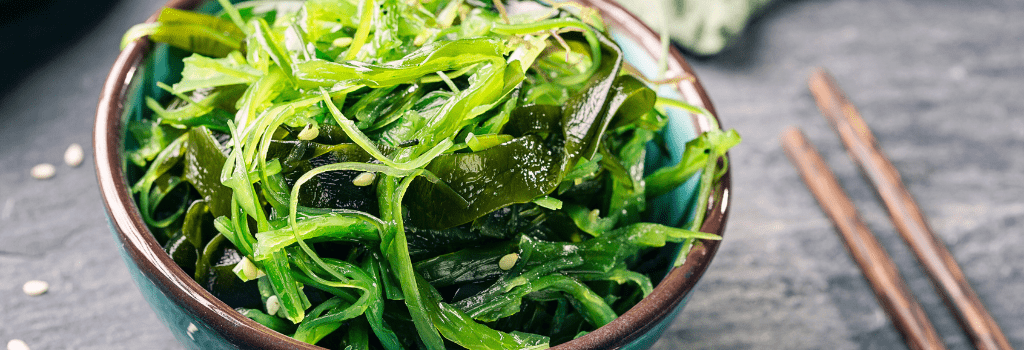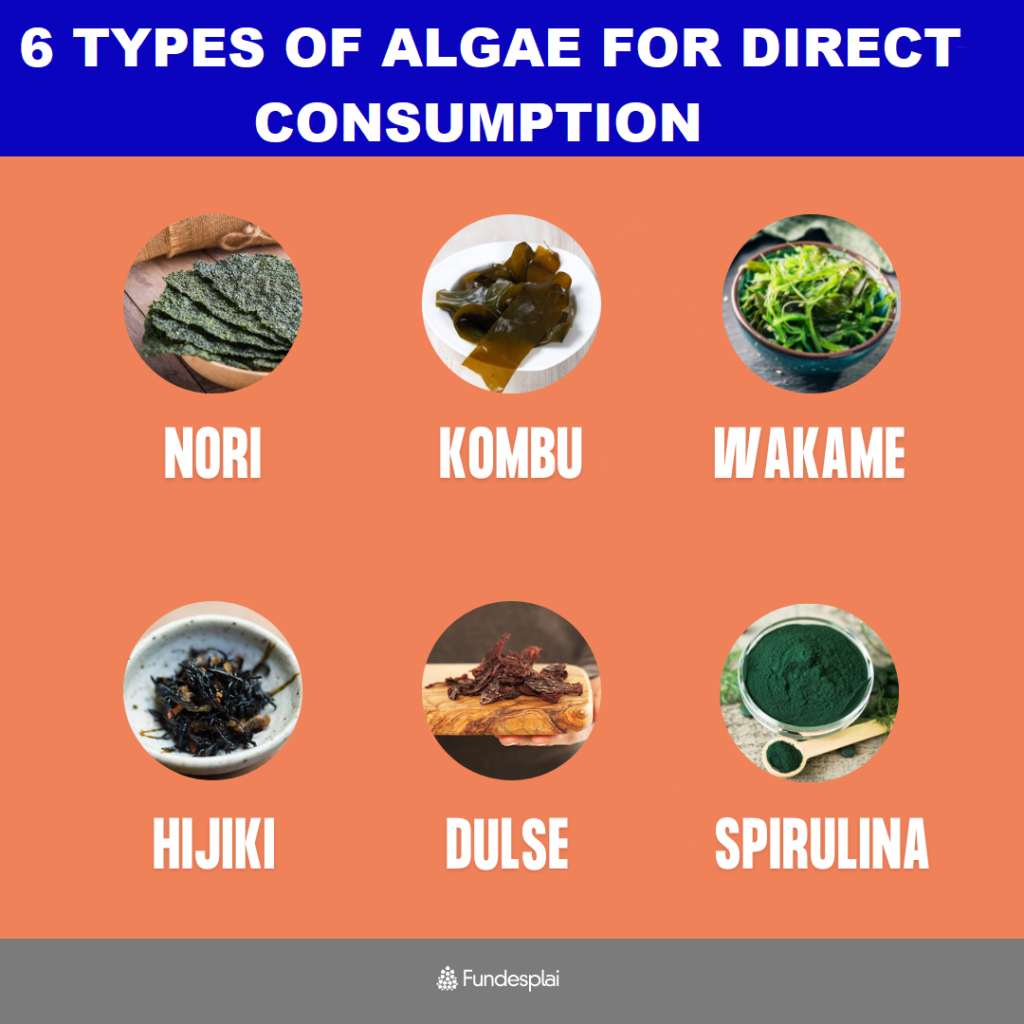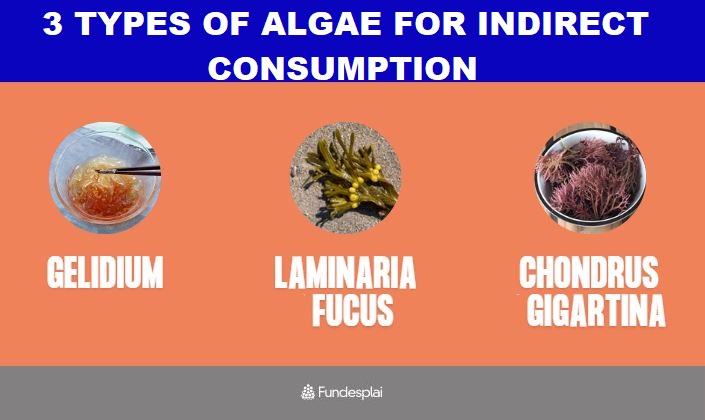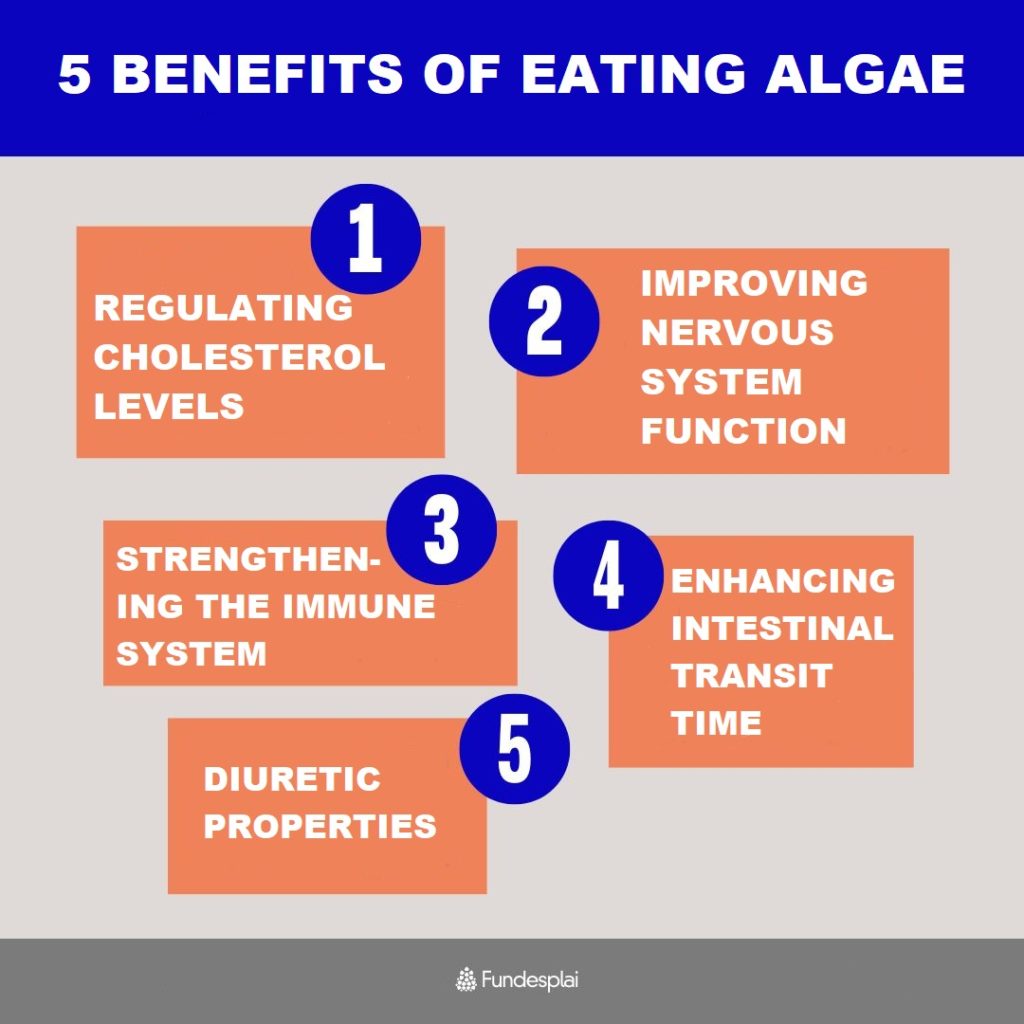
More and more people are incorporating macroalgae (seaweed) and microalgae, into their diets. Have you ever eaten them? Do you know that they are a great source of nutrients?
In some East Asian countries, such as Japan, China or Korea, seaweed is commonly consumed, for example, in dishes such as sushi. Although it is not one of the main foods in the rest of the world, more and more people are becoming interested in algae consumption and its benefits.
Algae are organisms that live in fresh and salt water. Being autotrophs, they are at the bottom of the food chain in many ecosystems, where they are food for many organisms.
There is a wide variety of algae, and humans use an estimated 200 species. However, not all the species go to the food industry, but some feed the textile and chemical industries.
Below, we describe some micro- and macroalgae and their main uses.
ALGAE FOR DIRECT CONSUMPTION
- NORI. It is the most important seaweed in Japan, China and Korea, and one of the tastiest and the most consumed in popular oriental dishes. Found in sushi and other rice dishes, salads, pasta and soups.
- KOMBU. Characterised by its earthy green colour, this type of seaweed has the property of making food fibre softer. It is very rich in iodine and contains calcium, iron, and vitamins A and B.
- WAKAME. It is a very versatile seaweed, which is why it is recommended to start eating seaweed. It is most commonly eaten raw in salads, but it can also be eaten cooked in soups, with chicken or fish and even baked in the oven. Wakame seaweed contains high amounts of minerals, especially calcium, and vitamins C and B.
- HIJIKI. It occurs in almost black cylindrical strips. Its high contents of mineral salts make it advisable to eat this seaweed in small quantities.
- DULSE. Also called dillisk or dilsk. With a mild taste and high protein, iron, potassium, iodine and calcium content, it is usually eaten in salads or roasted. Its characteristic colour is red.
- SPIRULINA. Used in food since long ago. It is a valuable nutritional supplement because of its protein content, which is higher than those of meat, fish and eggs. It contains vitamins B12 and E, provitamin A, iron, and selenium. Nowadays, it is cultivated on artificial media.
Some species of algae, such as those in the genus Arthrospira (previously included in the genus Spirulina), can be grown in photobioreactors containing water and nutrients. The algae are grown by injecting air and CO₂. Once they have grown and saturated the bioreactor, they are removed, and the process restarted.
But what impact does this cultivation model have on the environment? Well, a very small one! This is why algae consumption may become a sustainable food option in the future.

ALGAE FOR INDIRECT CONSUMPTION
These are species that cannot be consumed directly but are used in industrial processes to produce food components.
- GELIDIUM. Used as gelatine in manufacturing jellies, ice creams, syrups, mayonnaises and cheeses, giving them the desired consistency.
- LAMINARIA AND FUCUS. Two types of algae used in the food industry to obtain alginates, used as thickeners, stabilisers in sauces and gelling agents in jellies or olive fillings.
- CHONDRUS AND GIGARTINA. Used to obtain carrageenan for stabilising ice cream, milk powder, or instant foods.

If you want to know more about algae, read the following article:
- Algae and their potential as food (in Spanish).
WHAT PROPERTIES DO ALGAE HAVE?
Algae are a highly nutritious food, with all essential amino acids and a high content of minerals, vitamins, proteins, indigestible carbohydrates and antioxidants. At the same time, they are low in fat.
The most commonly consumed species, except for Nori, have higher levels of magnesium than other plant and animal products, a mineral that benefits the central nervous system. Calcium and phosphorus are also higher in seaweed than in fruits such as apples and oranges.
In addition, algae are characterised by their high iodine content, which improves the energy metabolism of our cells. Warning! According to the Spanish Agency for Food Safety and Nutrition (AESAN), due to their high iodine content, algae can harmful for people with thyroid dysfunction or who take iodine-containing medication and should also be avoided by children, pregnant women and nursing mothers.
For the general population, some of the benefits of eating algae are:
- Regulating cholesterol levels
- Enhancing intestinal transit time
- Improving nervous system functions
- Strengthening the immune system
- Diuretic properties


